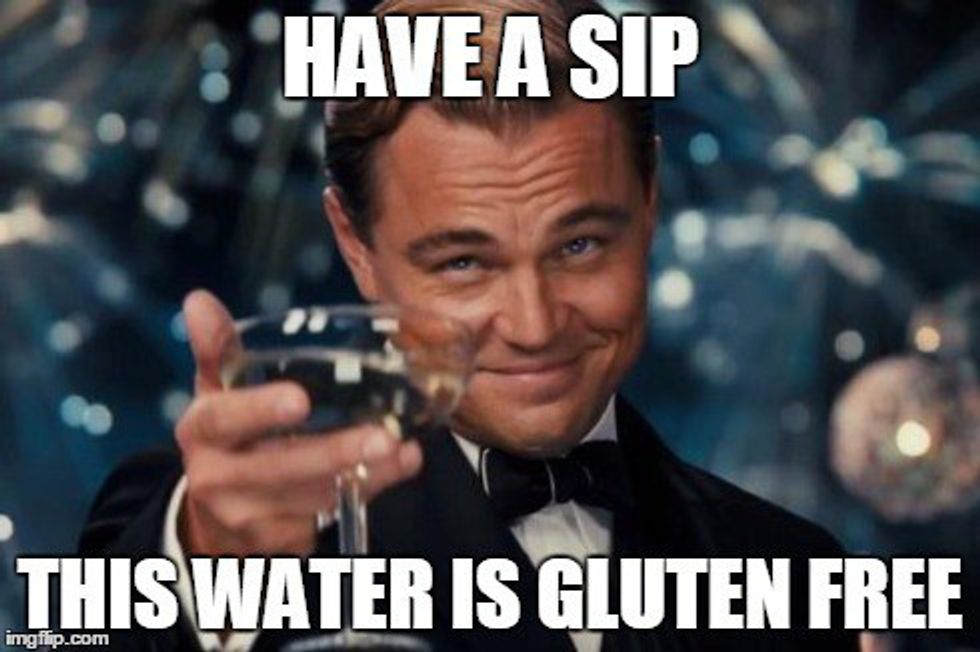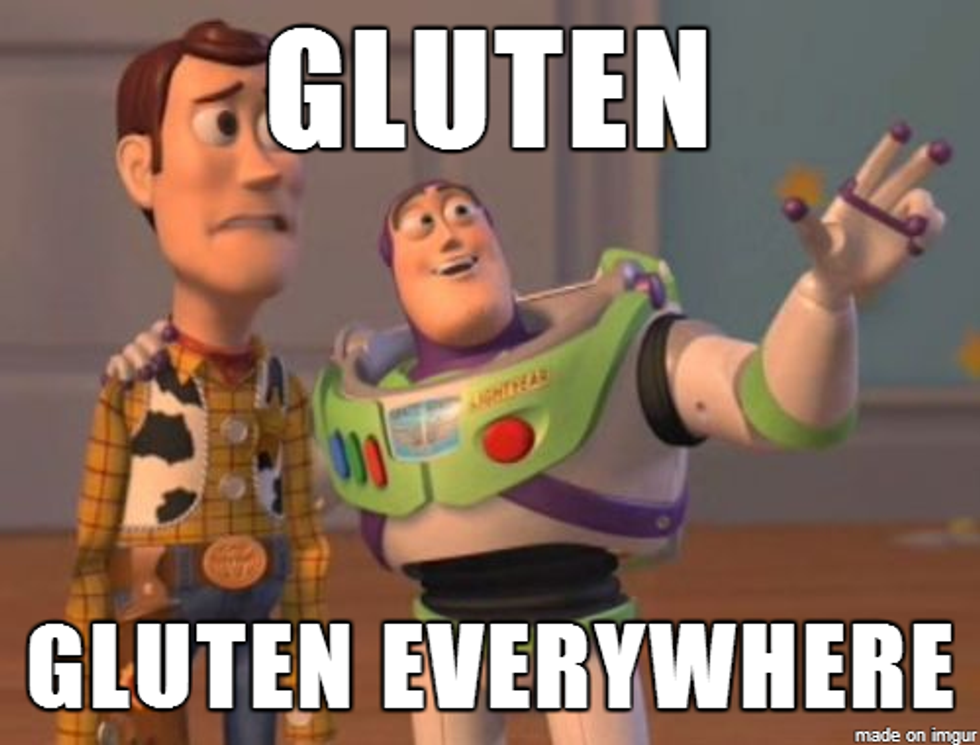So, you're going gluten-free? Yes, you will have to give up some foods...a lot of them.
If you don’t know what gluten is…I don’t really know why you’re reading this article. Bored, maybe? Gluten is a substance in wheat, which is in so much American food it can seem hard to eat well on the GF diet, especially in a cafeteria.
If you’re gluten-intolerant like my dad and brother and you can’t even eat a crumb without a near debilitating reaction, you’ll be lucky if your cafeteria is willing and able to accommodate you. Some cafeterias will not tell you their food is gluten-free, only “made without gluten” since they can’t guarantee crumbs haven’t work their way from other food into your food. If you don’t have to watch out for crumbs or you’re like me just trying to decrease your gluten consumption, things will go much more easily for you.
1. Definitely talk to the kitchen staff first thing.
Let them know your dietary restrictions and ask what options they have for you. Sometimes cooks will prepare deserts, single-serve pizzas, bread, etc. for gluten-sensitive students.
Also ask if you can bring in your own GF products or even if they’ll keep them in the kitchen for you. If your cafeteria doesn’t supply corn-flour tortillas, they’re cheap and good to have for tacos, wraps, sandwiches, etc. Sometimes, I bring my own Canyon brand bread, and the staff keeps it in the freezer. (GF bread goes bad faster than wheat bread, so I recommend storing it in the freezer. Pop it in a toaster to warm it back up. There will be wheat crumbs in the toaster, though.)
Know that it is really hard for cafeteria staff to cater well to your needs. They might say a dish is made without gluten but forget about the wheat in the gravy. On some days, it might require extra time to prepare your food so you’ll have to wait around. Other days, they might not have any good options for you. Try to be understanding. It’s frustrating for you, but they have hundreds or even thousands of other students to cook for. When they do get it right, thank them!
2. Explore your options for sandwiches and wraps.
Your cafeteria might order or bake bread made with corn, rice, or potato flour. (Yes, potato flour is a thing. Weird, right? My family has been experimenting with GF food since before I was born, and I didn’t know you could make flour out of potatoes.) Know that these breads will taste rather different, and they tend to crumble more easily.
If the cafeteria doesn’t have any GF bread for you, they might have corn tortillas. Usually those ones are really small. So, instead of rolling one into a wrap I use two pieces to make a sandwich. Like I said, if your cafeteria doesn’t have any, they’re pretty inexpensive to buy.
3. Check out the cereals.
Plenty of cereals are GF. Frosted Flakes are one of my brother’s favorites. Cheerios are now GF. Thanks, General Mills! Unfortunately, Lucky Charms, Fruit Loops, Golden Grahams, Captain Crunch, and Cinnamon Toast Crunch are not.
Cocoa Puffs and Reese’s Puffs are usually GF. Sometimes they’re not, and some off-brands aren’t either. Ask the cafeteria staff to see the ingredients list. Kix, Rice Crispies, Corn Chex, and Rice Chex are also GF. I personally love these cereals, even though most people call them “too bland.”
4. Be brave.
With limited options, you learn to be creative. What do you have in your cafeteria for adding flavor? Salad toppings aren't just for salads. Sunflower seeds and cranberries taste great on a lot of dishes. Also try honey, cheese, cinnamon, other spices, and peanut butter. Peanut butter is my life. If your cafeteria has a sandwich grill, try putting peanut butter and banana slices between two corn tortillas and have it grilled.
This is where it gets weird. For those cereals that are “too bland,” put a some of one or two kinds in a bowl. Heat up a couple spoonfuls of peanut butter mixed with some honey and stir it into your cereal. Try a hamburger patty with melted cheddar cheese and Rice Crispies. Yes, seriously. Try it.
Don’t be afraid to try new, even random things! Ignore the people staring at your plate. (I don’t know how many times I’ve had to answer the question “What are you eating?”)
Remember that going GF is hard, but it’s possible.






















